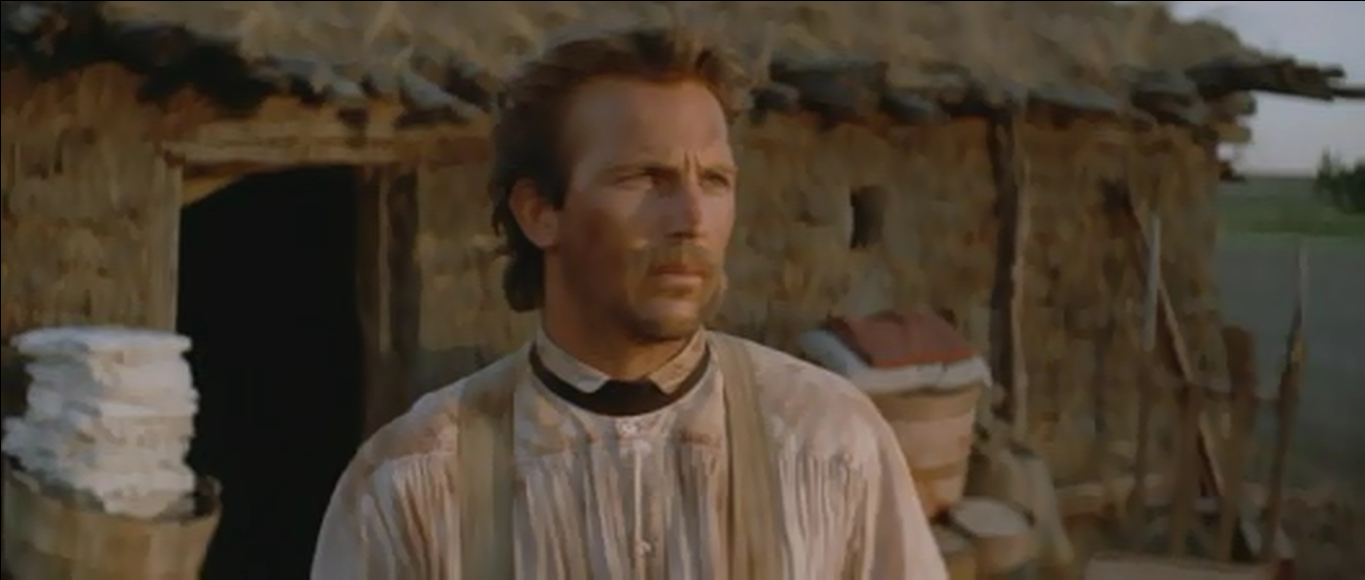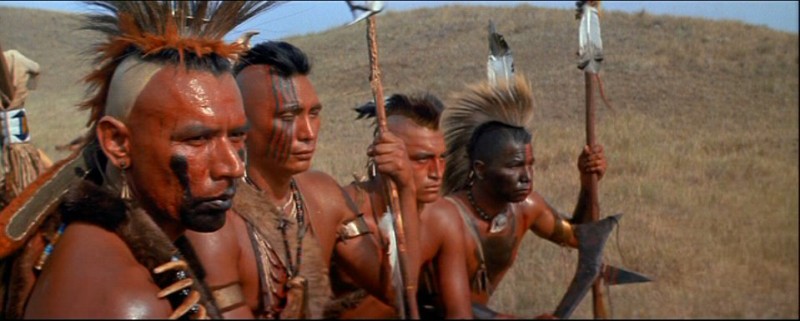Throughout the film Dancing With Wolves, Lt. John Dunbar
slowly transforms from a western soldier to a proud member of the Sioux tribe. He is assigned to a post on the frontier to negotiate
with the local “Indians.” Dunbar not
only negotiates with the Sioux, but he becomes one of them based on several
factors. In the beginning, Dunbar is
dressed in a western army uniform with the United States Flag at hand. Towards the end, Dunbar slowly adapts to the
Sioux way of dress and trades away his old western clothing. Dunbar realizes that there is no civilized or
savage way of dress; it all depends on the meaning behind one’s clothing and
the person’s point of view. Another
example is when Dunbar dances around the fire by himself at his post. This displays another example of how it looked
so uncivilized before, but now he understands the meaning and purpose behind
it. Dunbar starts to connect to the
Sioux on an even deeper level by learning their language and marrying Stand
With A Fist. Dunbar learns that
communication is key to understand one’s culture and intentions and that it
does not matter who marries whom, as long as that couple makes each other
happy. Lastly, Dunbar fights against the
United Stares army he was previously apart of.
Dunbar is able to look at white people through the point of view of the
Sioux. He finds out how cruel white
people can be around nature and Native Americans, like leaving their trash
behind and having not respect to Native people or nature. He can now see how
the view of Native Americans though a white person’s perspective is highly
stereotyped. Overall, Lt. John Dunbar
learns to be one of the Sioux and drops the life of a Union Soldier.
 Dancing
With Wolves displays important visual symbols and stereotypes that are recognized in Native American history. Although
this is one of the first films to represent Native Americans in an overall
positive way, there are still common stereotypes displayed in the film. One of the most common stereotypes that anger
the Sioux is the use of guns in the film.
The Sioux does not like how the film portrays one white man that saves
their reservation from the Pawnee by teaching them how to use riffles. According to history, The Sioux already
started to trade guns and knew how to fire them well before Lt. Dunbar showed
up. When Dunbar arrives at his post, a
grey wolf spots him. The wolf seems to
always be close by, and Dunbar calls the wolf Two Socks because of his white
paws. Two Socks symbolizes two aspects
in the film. One is the friendship
between a dog and an owner today. Dogs
originated from wolves, and wolves slowly became friendlier with humans. Dunbar feeds Two Socks up to the point where
Two Socks would eat straight out of his hand.
Having this kind of relationship with Two Socks allows them to protect
each other, like dogs with their owners today. The other part Two Socks
symbolizes is the reckless killing of Native Americans by white soldiers. When the soldiers beat Dunbar excessively and
kill Two Socks just to kill something, they did not have any remorse. This shows how white soldiers did not care
what they killed or left behind. Another symbol in the film is “Tatanka” or
buffalo. Buffalo are not just meat to
eat or fur to sell, but a holy figure in the Sioux tribe. They use
Dancing
With Wolves displays important visual symbols and stereotypes that are recognized in Native American history. Although
this is one of the first films to represent Native Americans in an overall
positive way, there are still common stereotypes displayed in the film. One of the most common stereotypes that anger
the Sioux is the use of guns in the film.
The Sioux does not like how the film portrays one white man that saves
their reservation from the Pawnee by teaching them how to use riffles. According to history, The Sioux already
started to trade guns and knew how to fire them well before Lt. Dunbar showed
up. When Dunbar arrives at his post, a
grey wolf spots him. The wolf seems to
always be close by, and Dunbar calls the wolf Two Socks because of his white
paws. Two Socks symbolizes two aspects
in the film. One is the friendship
between a dog and an owner today. Dogs
originated from wolves, and wolves slowly became friendlier with humans. Dunbar feeds Two Socks up to the point where
Two Socks would eat straight out of his hand.
Having this kind of relationship with Two Socks allows them to protect
each other, like dogs with their owners today. The other part Two Socks
symbolizes is the reckless killing of Native Americans by white soldiers. When the soldiers beat Dunbar excessively and
kill Two Socks just to kill something, they did not have any remorse. This shows how white soldiers did not care
what they killed or left behind. Another symbol in the film is “Tatanka” or
buffalo. Buffalo are not just meat to
eat or fur to sell, but a holy figure in the Sioux tribe. They use  every part of the buffalo (bones for
weapons, internal organs for water pouches, hide for blankets) and make sure
none of it goes to waste. This makes
sure that the death of a buffalo will give life to many others. This film does a great job at showing
important historic symbols and stereotypes during this time.
every part of the buffalo (bones for
weapons, internal organs for water pouches, hide for blankets) and make sure
none of it goes to waste. This makes
sure that the death of a buffalo will give life to many others. This film does a great job at showing
important historic symbols and stereotypes during this time. 



























